January 11 - Landing on Gibbs Island
Steven Dutch, Professor Emeritus, Natural and Applied Sciences, University of Wisconsin - Green Bay
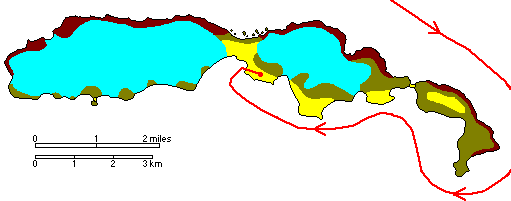
Still looking
A camp near The Spit would have been nice, since it would have allowed easy access to both sides of the island. The spit itself was too low to be safe in severe storms, but all the good real estate on high ground was taken by penguins. So we tried again, further west.
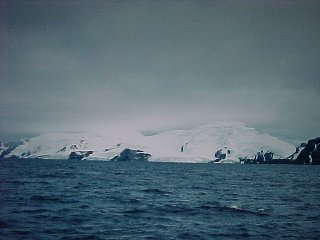 |
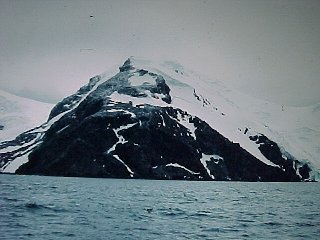 |
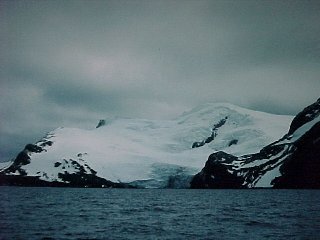 |
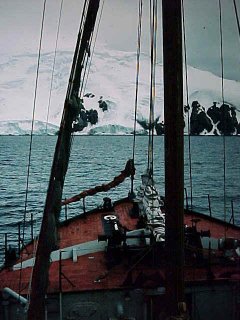 |
This Might Do
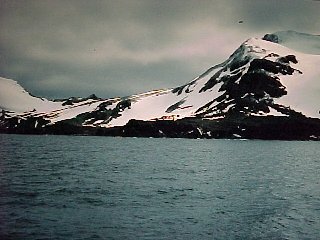 |
The saddle about midway along the island was the next best place to locate a camp (left, below). The flat bench in the foreground was a bit harder to reach than some other spots, but not too bad. It was big enough that much of it was nonpenguiniferous, and we eventually set up camp near the base of the steep hill to the right of the saddle. |
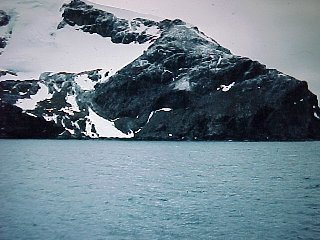 |
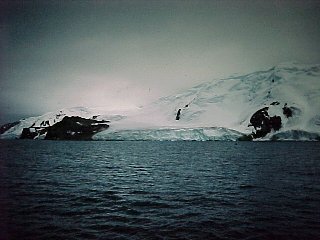 |
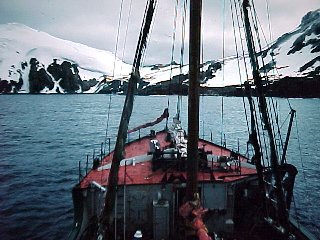 |
Welcome Wagon
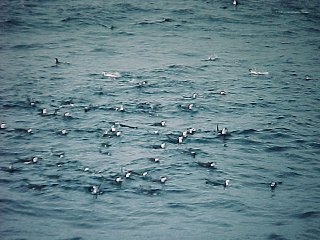 |
Chinstrap penguins came out to meet us (and feed on the krill our wake stirred up). |
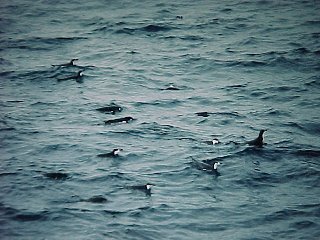 |
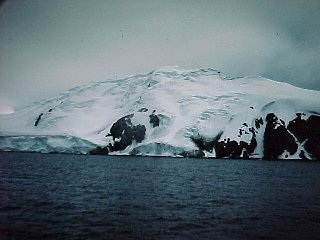 |
Check It Out
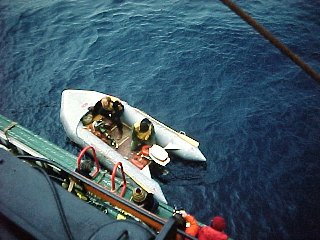 |
Two Hero crewmen ready a Zodiac for launch. These look flimsy but they are made of thick rubber and they bounce off rocks. |
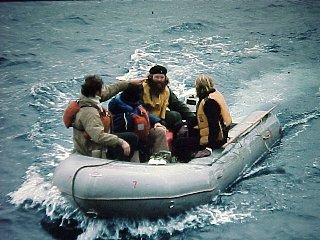 |
The recon party returns. Maarten DeWit in the beige coat and Roy Kligfield, in blue, are from our party. |
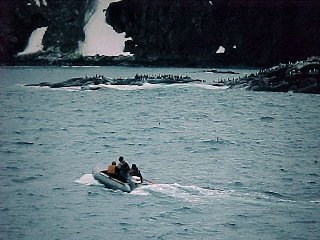 |
Pitch and I are left ashore to carry supplies in while Maarten and Roy return to the Hero for more. |
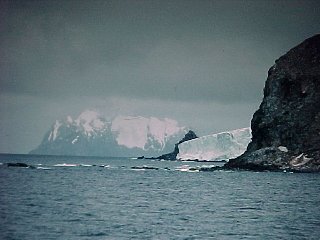 |
O'Brien Island looms beyond Gibbs Island in the telephoto shot below (left). |
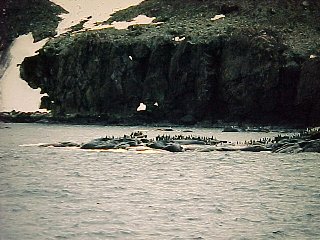 |
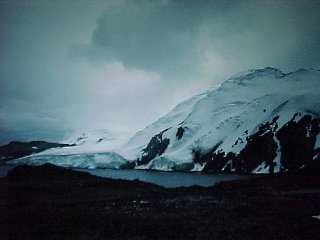 |
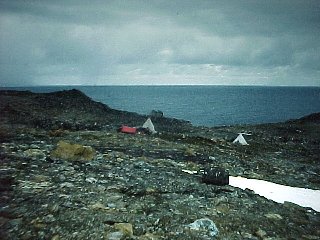 |
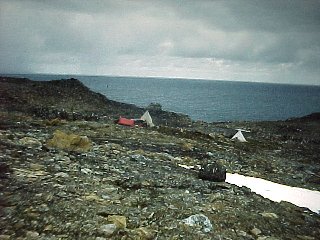 |
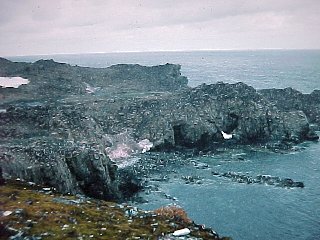 |
A distant view of the campsite. One of the tents is visible against
the patch of snow in upper left. The pink coloring on the snow at the
base of the sea cliff is due to algae. The gray crust around it is due
to penguins. All the tiny white specks in the right two-thirds of the
picture are penguins. Penguin droppings have a sweetish, musty smell
that absolutely never comes out of anything. I saw the trailer for Happy Feet 2 and the sight of those hordes of penguins brought it all back. |
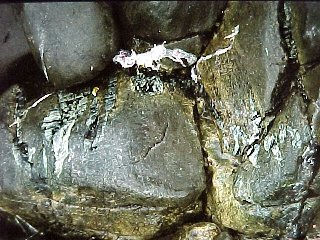 |
What we came to see: folded serpentine veins in dunite along the shore. |
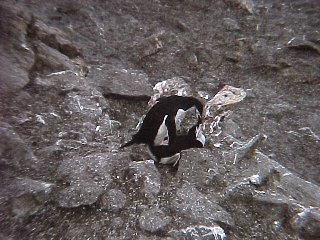 |
Here a chinstrap regurgitates food for its mate, who has been sitting patiently on the nest, perhaps for days. Some species are gone for weeks at a time while the mate sits. That's probably why these places are called rookeries. |
Skuas
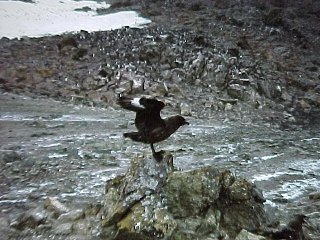 |
Skuas are dark brown predatory gulls that eat penguin chicks, among other things. They actually roam the oceans of the world and may be the only species, apart from humans, that have visited every point on the globe at some time or another. |
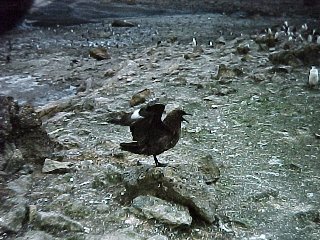 |
Farewell Hero
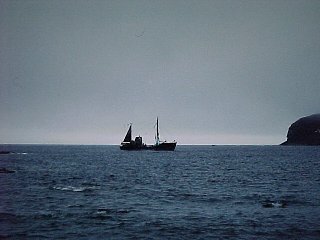 |
Our last view of the Hero for almost three weeks. |
Return to Antarctica-South America 1975 Index
Return to Professor Dutch's Home Page
Created 15 February 2000, Last Update